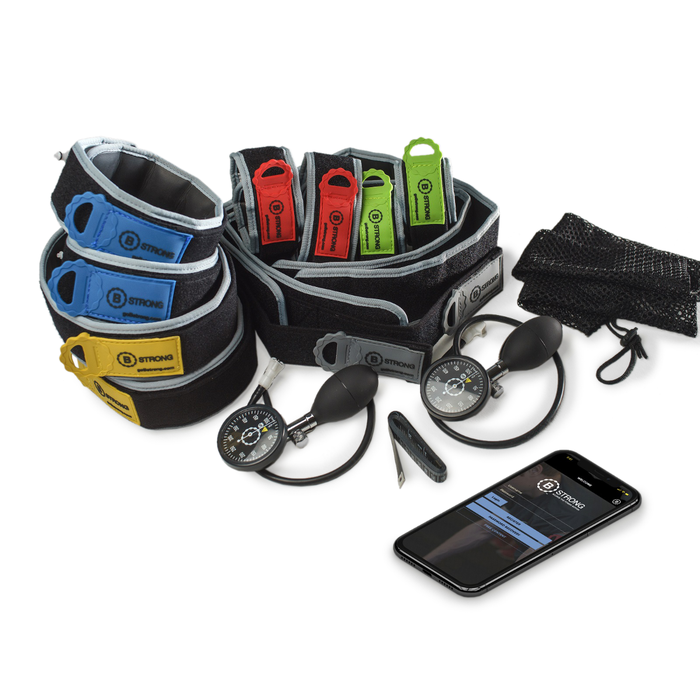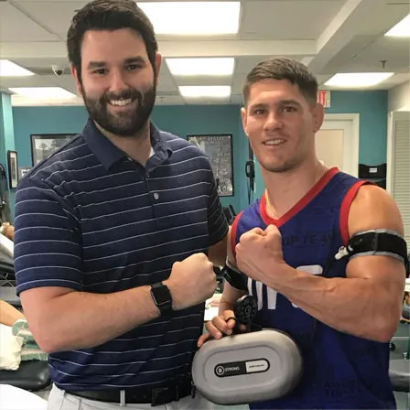-Dr. Jim Stray-Gundersen, sports doctor/scientist, co-founder B StrongTM
I am often asked “What about high blood pressure?” I’m tempted to say, “Yes, high blood pressure is bad, that is why you should B StrongTM!” The bottom line is that regular B Strong TrainingTM is good and safe for your arteries and will reduce your blood pressure over time and may reduce or eliminate your need for hypertensive medications.**
Below is an overview of high blood pressure provided by the Center for Disease Control (CDC). https://www.cdc.gov/bloodpressure/index.htm
- Hypertension (high blood pressure) is a common malady in our society. It is part of the Metabolic Syndrome (hypertension, hyperlipidemia, hyperglycemia and obesity) so many of us suffer from. The CDC reports that approximately, 33% of those over 20 years old, fit the definition of having “high blood pressure”. It has been estimated that one fifth of those with hypertension, don’t know they have high blood pressure. https://www.cdc.gov/nchs/fastats/hypertension.htm
- We have all heard that “120/80” is a “normal” blood pressure, but how is this defined, what does it mean, what are the dangers associated with high blood pressure and what can be done about it?
- To properly measure one’s blood pressure to make a diagnosis of hypertension, it takes 3 visits to your doctor, where you are properly hydrated, fasted and have abstained from stimulants (e.g. caffeine) for the previous 12-24 hours, lay quietly for 15 minutes in a comfortable, darkened space and then take a series (typically 3) measurements of your blood pressure in each arm. Blood pressure should be measured by a trained technician, who is not apprehensive themselves. Suffice it to say that these conditions are rarely met. So, one of the first things to say, is that those who get their blood pressure taken by an automated system at the grocery store, or pharmacy, or a doctor’s visit for something else, or a health fair, or at someone’s home, if high, should have the reading confirmed by measuring it properly.
- One’s blood pressure varies throughout the day depending on activity, psychologic stress, and diet.

5. Blood pressure increases with any exercise

As one can see, blood pressure increases when going from “rest” to “exercise”. Generally, blood pressure increases more, the more intense the exercise is. Generally, blood pressure increases to a greater extent, especially diastolic blood pressure, with resistance training compared to aerobic training. While, blood pressure increases with all exercise, it is for a short period of time (out of your 24-hour day). In the graph below, occasionally, the blood pressure was close to 300/150 (really high!) during this series of weight lifting repetitions, but only momentarily, and returns to “normal” in between sets.

We also know that those that regularly exercise, have less hypertension than those that don’t exercise and that a regular exercise program will reduce one’s blood pressure. So, if the problem associated with hypertension, is an elevated average pressure over years that contributes to wear and tear on the arteries, brief periods (seconds to minutes) of increased pressure associated with exercise, do not contribute meaningfully, to the overall 24-hour average pressure. If, as is the case, regular exercise contributes to lowering the average blood pressure, it is a treatment for hypertension. There is one caveat. Very rarely, exercise and particularly, resistance training, can precipitate a heart attack or stroke. This has been well researched and the consensus of physicians is that the benefit from regular exercise mitigating the incidence and risk of heart attack and stroke, overwhelms the small risk of precipitating an untoward event.
- What is the problem with “high blood pressure”? Essentially, the higher the average blood pressure over a 24-hour period, the greater the “wear and tear” on your arteries. Over time, this “wear and tear” can contribute to damage to the arteries, ultimately, leading to atherosclerosis, damage to blood vessels, bleeding and occlusion complications, like heart attacks, strokes and kidney failure. However, it generally takes years for these problems to manifest themselves. Indeed, many people go on for years not knowing they have high blood pressure because it doesn’t cause any symptoms.
- Virtually everyone who has been told they have hypertension or high blood pressure, has either been seen by a doctor, (who told them and may have put them on medication(s)) or they have had a measurement somewhere that was high (note: this may not actually be hypertension, depending on the conditions during measurement). When someone comes in for a BFR Training session or is trying BFR Training at home or in the gym, they rarely report or have measured their blood pressure before exercise or elastic BFR exercise (like B StrongTM). They also likely won’t report their use of hypertension medications to those running the session. The point is, that virtually no one measures their blood pressure before starting any exercise and if they did, what would they do with the information? Only in the rare circumstance of a hypertensive crisis (where they would have symptoms) should they change their plans and seek medical attention.
- Is exercise and/or BFR exercise dangerous for someone with hypertension to perform? For most of us, even if we may have mild hypertension or are taking medication for hypertension, regular exercise and elastic BFR exercise (like B StrongTM) is actually good and treatment for your hypertension. However, there are some circumstances where the person should seek medical attention, instead of doing their exercise session. One of those is if one is in the middle of a “hypertensive crisis” (where the blood pressure is very high, uncontrolled and the person has symptoms, they should seek immediate medical attention. See the Mayo Clinic link for symptoms of hypertensive crisis. https://www.mayoclinic.org/diseases-conditions/high-blood-pressure/expert-answers/hypertensive-crisis/faq-20058491
- One cautionary note: Distinguishing between rigid, non-elastic BFR (that can cause blood pressure to rise markedly) and elastic BFR exercise (like B StrongTM) is important with respect to hypertension. There is literature that shows that non-elastic BFR exercise (e.g. using surgical tourniquets or blood pressure cuffs) can be associated with a precipitous rise in blood pressure, where elastic BFR exercise (like B StrongTM) is not. B Strong TrainingTM is the safer alternative.
In summary, people (with or without treated blood pressure) should know what their resting blood pressure is for general health reasons, but it does not influence their decision to perform regular exercise nor elastic BFR training, like B StrongTM. Regular exercise and elastic BFR training have been shown to reduce blood pressure over time. Particularly, if one has a diagnosis of hypertension, caution and care should be taken when performing rigid, non-elastic BFR training (e.g. use of surgical tourniquets or BP cuffs).
-Dr. Jim Stray-Gundersen, sports doctor/scientist, co-founder B StrongTM.
Always consult your physician or health care professional before beginning any exercise program. This site offers health, fitness, and nutritional information and is designed for educational purposes only. It is not intended to diagnose any medical condition or to replace your healthcare professional. You should not rely on this information as a substitute for, nor does it replace, professional medical advice, diagnosis, or treatment. If you experience any pain or difficulty with these exercises, stop and consult your healthcare provider.
Developments in medical research may impact the health and fitness advice that appears here. No assurance can be given that the advice contained in this site will always include the most recent findings or developments with respect to the particular material.
















